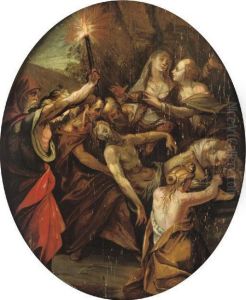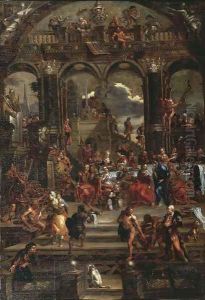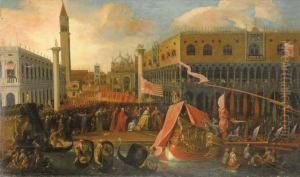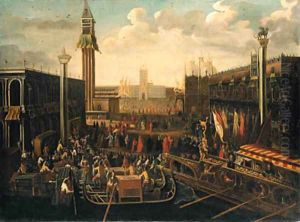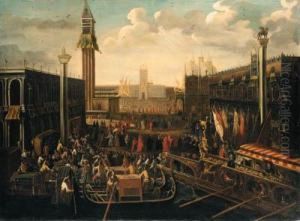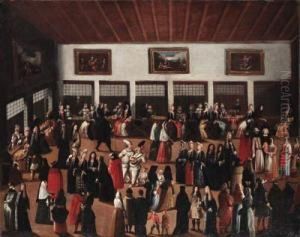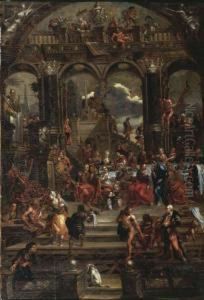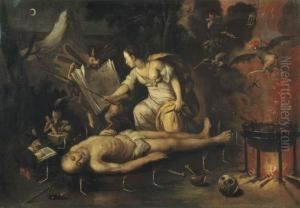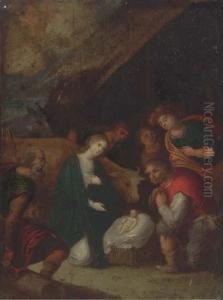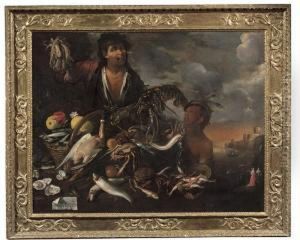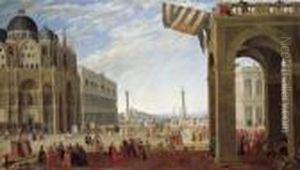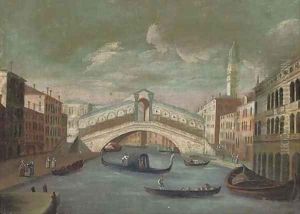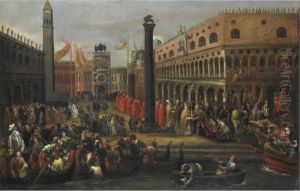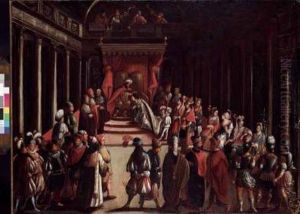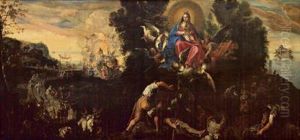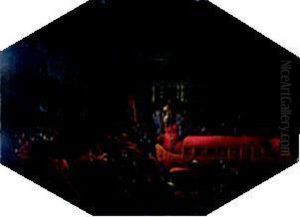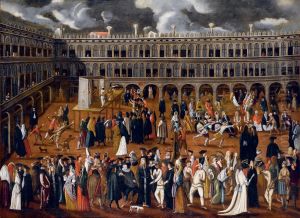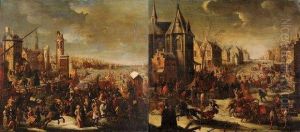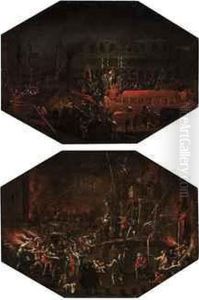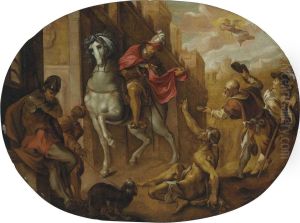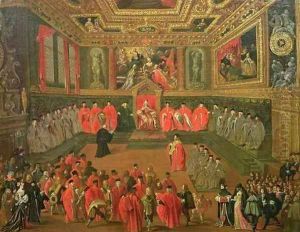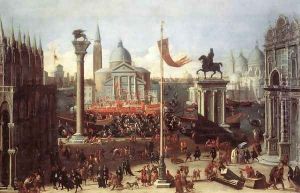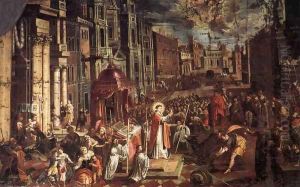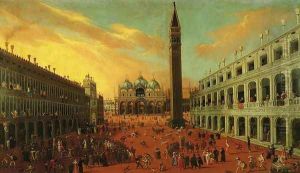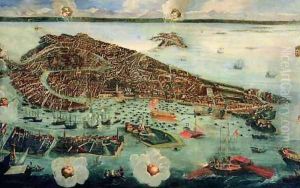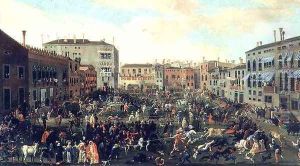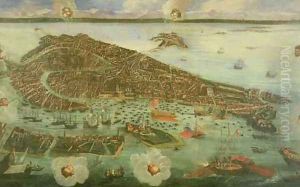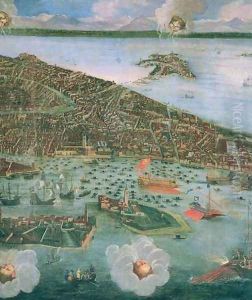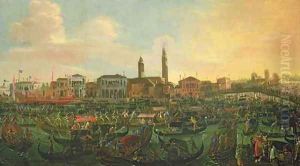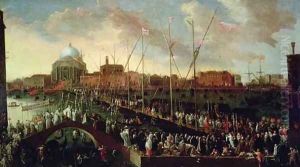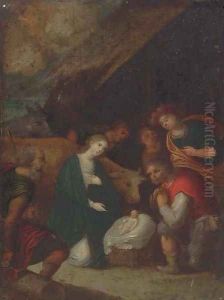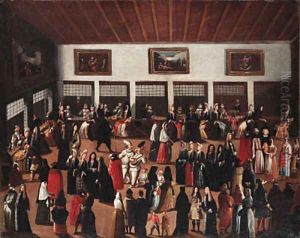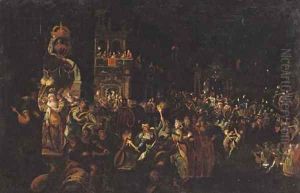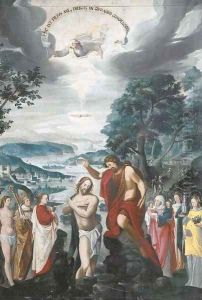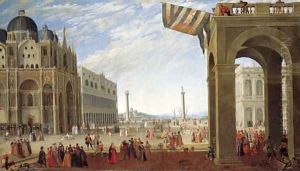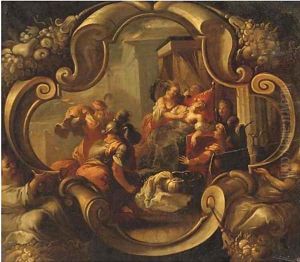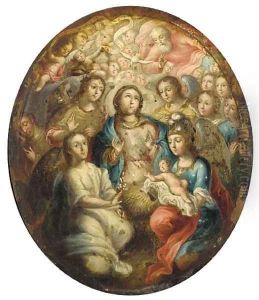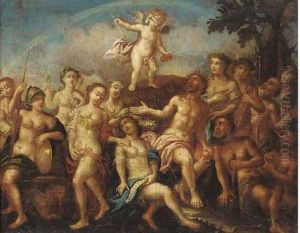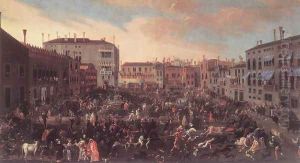Joseph the Younger Heintz Paintings
Joseph the Younger Heintz was a Swiss painter born in 1600 in Basel, Switzerland. He was the son of Joseph Heintz the Elder, a renowned Mannerist painter, which meant that artistry and creativity were part of his heritage from a young age. Growing up in a household steeped in artistic tradition, Heintz the Younger was exposed to the vibrant world of painting early on, receiving his initial training from his father. This early education set the foundation for his artistic journey, blending the rich influences of his father's style with his own evolving vision.
Throughout his career, Joseph the Younger developed a distinctive style that while reflecting the Mannerist tradition, also embraced aspects of the emerging Baroque sensibility, particularly in his later works. He was known for his versatility, working across a range of mediums including oil paintings, frescoes, and sketches. His subjects varied widely, from religious and mythological scenes to portraits and landscapes, each characterized by a keen attention to detail and a deep sensitivity to the interplay of light and shadow.
In the early 1620s, Heintz embarked on a journey that would greatly influence his artistic direction. He traveled to Italy, where he spent several years studying the works of the Italian masters. This experience enriched his palette, deepened his understanding of human anatomy, and refined his use of perspective. Upon returning to Basel, he brought with him the rich influences of Italian art, which he seamlessly integrated with his native Swiss styles.
Joseph the Younger's work did not go unnoticed; he received commissions from both secular and ecclesiastical patrons, which allowed him to work on a variety of projects, from altar pieces to decorative frescoes for private residences. Despite his success, detailed records of his life and works are somewhat scarce, and many of his pieces remain attributed to him based on stylistic analysis rather than concrete documentation.
Heintz continued to paint well into his later years, leaving behind a legacy that was deeply intertwined with the artistic movements of his time. His death in 1678 marked the end of an era for the Heintz family's artistic dynasty. Today, Joseph the Younger Heintz is celebrated for his contribution to the transition between the Mannerist and Baroque periods in Swiss and European art. His works, though not as widely recognized as those of some of his contemporaries, continue to be studied for their beauty, technical skill, and historical significance.
